Six conclusions from Milan-San Remo
Pogacar's mistake, Van der Poel ready for the Classics, the future for dropper posts, and more
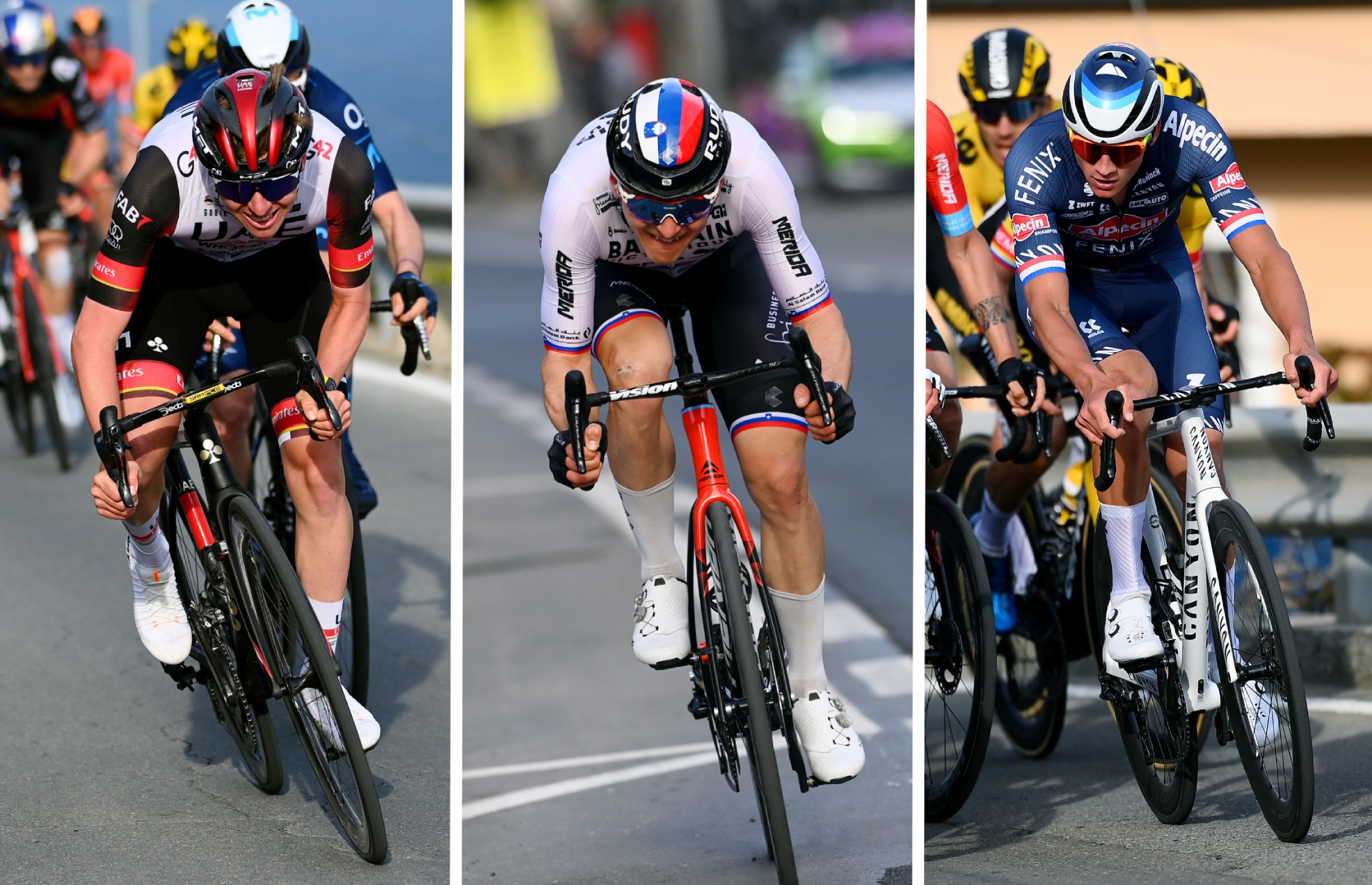
Saturday's 113th edition of Milan-San Remo had thrown up a long list of talking points well before Matej Mohorič's (Bahrain Victorious) audacious dropper seatpost-assisted attack to victory down the Poggio.
The race was hard from the Cipressa onwards as sprinters shot out the back under the high pace, and then Tour de France champion Tadej Pogačar (UAE Team Emirates) went on the attack on the Poggio, blowing the lead group of just 30 men apart.
After some time to ruminate on six-and-a-half hours of action, our reporters on the ground Stephen Farrand and Barry Ryan have picked out six key points from the race, including Pogačar's mistake, Mathieu van der Poel's (Alpecin-Fenix) return at the top of his game, the future of dropper seatposts in road racing, and more.
Read on for Cyclingnews' six conclusions from La Classicissima di Primavera, Milan-San Remo.
Never change, Milan-San Remo
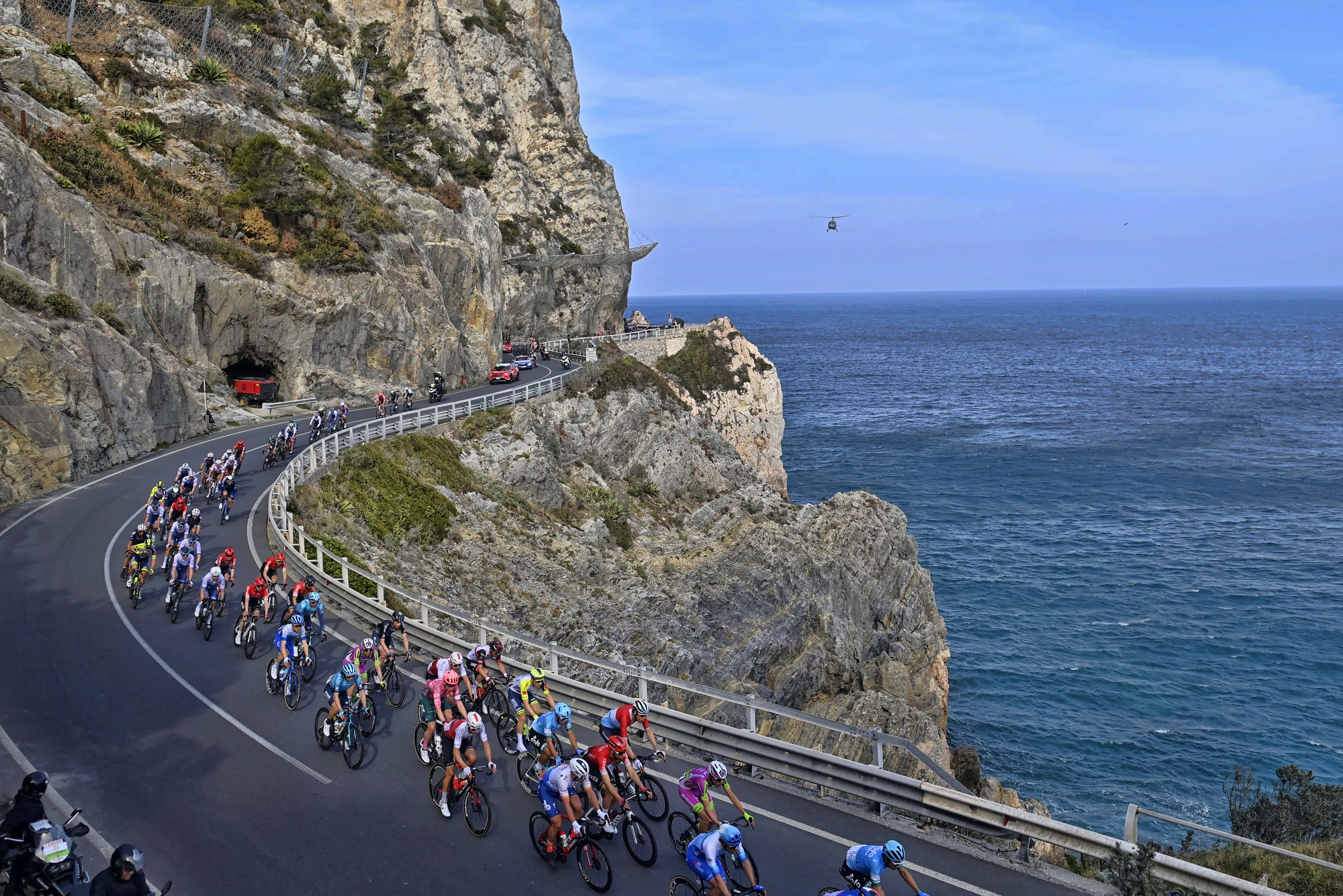
The organisers of Milan-San Remo added the Poggio to the route in 1961 and then the Cipressa in 1982 in response to growing dominance from the sprinters. There have been calls for other climbs to be added to inspire more aggressive racing, but as this year's race confirmed Milan-San Remo is a perfectly-balanced race.
Milan-San Remo is so easy to finish but so difficult to win that even a tiny detail or a split second of racing can change the outcome of the race.
A poor feeding strategy during the 293-kilometre race, a late mechanical like that which affected Peter Sagan (Team TotalEnergies), or poor positioning before the Cipressa and Poggio, can all quickly end a riders chances.
Get The Leadout Newsletter
The latest race content, interviews, features, reviews and expert buying guides, direct to your inbox!
A change in wind direction can help make a hard race over the Cipressa or help set this year's near-record average speed of 45.331 kph, but it can also blunt Tadej Pogačar (UAE Team Emirates)– who attacked into a headwind on the Poggio.
A technical marginal gain like Mohorič's dropper seatpost can help gain a seven-second gap on the descent of the Poggio, enough to deter a united chase and allow the Slovenian to win Milan-San Remo. A late attack can reward Anthony Turgis with second place, but leave the TotalEnergies rider desperate about being so close but still so far from victory.
It is the balance of so many subtle but often decisive factors that make Milan-San Remo so thrilling, such a crescendo of emotions and rush adrenaline, an intense climax to the racing after hours of waiting and watching. (SF)
Pogačar not stronger than his mistakes
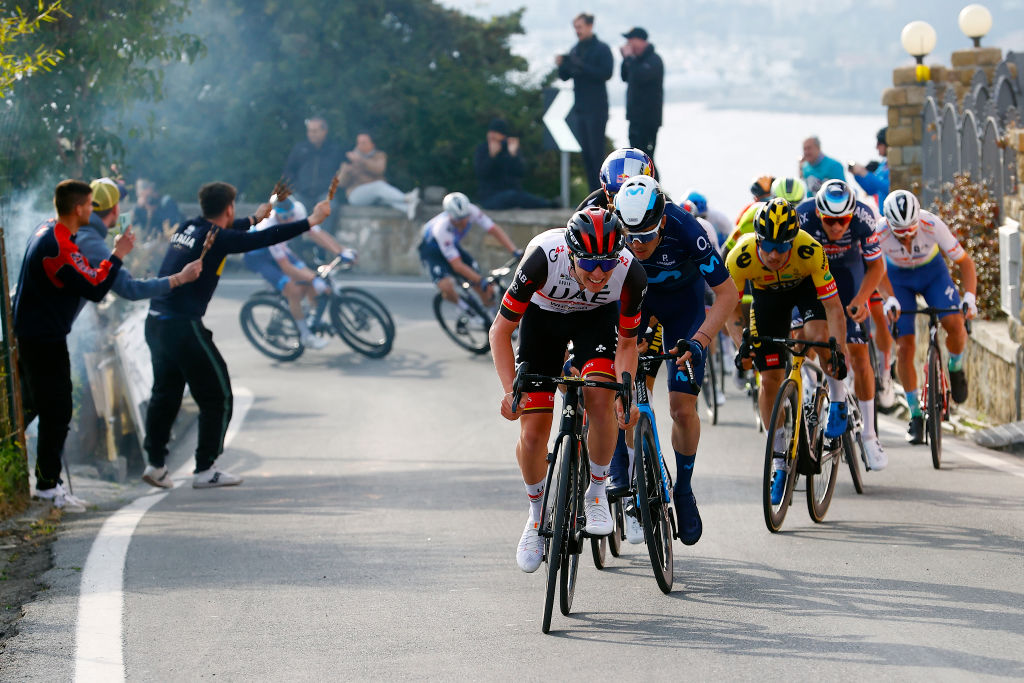
The presence of Pogačar promised to bring something different to this edition of Milan-San Remo and so it proved.
Perhaps not since Moreno Argentin in 1992 did a single rider unleash such a repeated volley of accelerations on the Poggio. Pogačar launched no fewer than four attacks on the final climb and he was also the first to respond to two more sustained efforts.
Pogačar was almost certainly the strongest rider in the race, as testified by Wout van Aert's admission that he had "fired his best arrows" in straining simply to withstand the Tour de France champion's onslaught. But, as Argentin discovered 30 years ago, hitting the highest notes on the Poggio doesn't automatically translate to winning the whole song contest over the other side in Sanremo.
This time, unlike at the UAE Tour, Strade Bianche and Tirreno-Adriatico, Pogačar's overwhelming power was tempered by a tactical error. By his own admission, he got his timing wrong on the Poggio, attacking a hairpin too soon and into a headwind, to boot. Even though he still had the strength to accelerate five more times on the Poggio, he was never able to undo the damage wrought by that initial mistake.
"I attacked too early and into a headwind the first time on the Poggio, that's a mistake you can't repair at Milan-San Remo," he said.
The simple fact that Pogačar was not stronger than his initial mistake will offer some reassurance to a peloton braced for an era of dominance not seen since that of Eddy Merckx. So long as cycling remains a sport of strategy as well as strength, there is always a chance to upset the odds, even against a figure such as Pogačar. (BR)
Mohorič's dropper post could change (some) racing forever
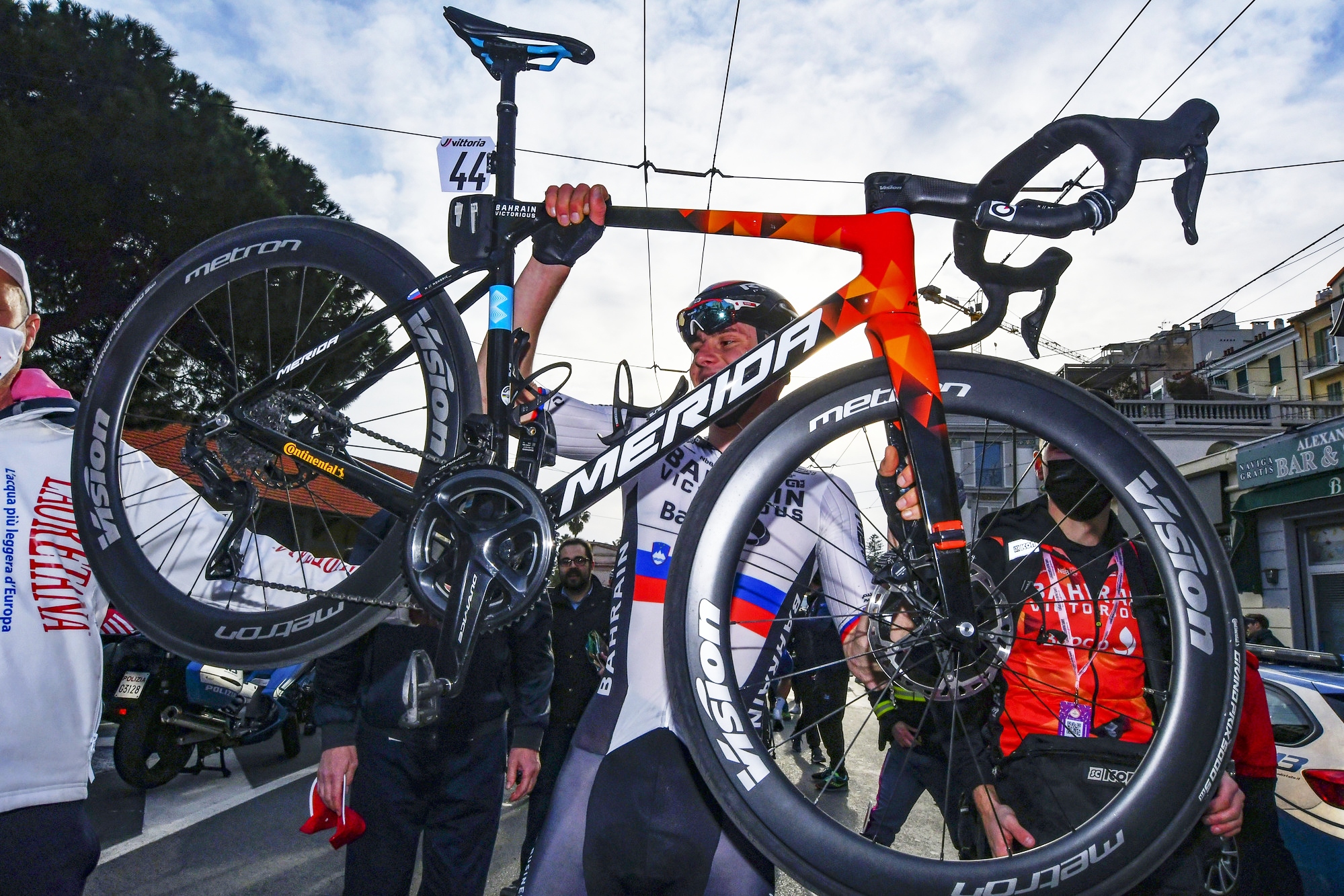
There are at least 10 ways to win Milan-San Remo and Mohorič's ingenious use of a dropper seatpost to attack on the descent of the Poggio added an extra twist to the race and perhaps changed racing forever, at least some races.
Mohorič and his Bahrain Victorious team have revealed that they had been working on the dropper post marginal gain for months, perfecting the choice of equipment, testing it multiple times in training on the Poggio and then even landing a psychological blow on his rivals by telling them of his plans but also warning them not to risk their necks by trying to follow him.
"I knew it was a one in a lifetime chance and I wanted to make it work for the team and technical partners who had the idea," Mohorič said post-race, combining bike technology with his superb racing ability and best in class descending skills.
Mohorič perfected the super-tuck aero position and used it to win the junior road world title in Florence in 2013. Emulation in the peloton lead to the UCI banning the super-tuck but now Mohorič has given the sport's governing body and his rivals something to worry about.
"Now I've destroyed cycling again," he joked in the post-race press conference. "Now I think everyone will start to use dropper posts. It'll be one more thing to think about on the bike.
"Maybe next year all the bikes will be available with a dropper. It's safe in traffic too and so in training. You can brake better. I think it's a big advantage in racing too," he suggested.
In truth, it is difficult to imagine dropper posts becoming common on every bike and in every race. They appear to offer an advantage at Milan-San Remo if you have the ability to climb the Poggio with the best riders.
They could also be an option for Strade Bianche, Il Lombardia and mountain stages that end with a technical descent but will arguably not be a major benefit in other Classics or Grand Tours.
Mohorič is probably not concerned if dropper posts become widespread, however. He was the first to take advantage of the technology to win Milan-San Remo. (SF)
A tale of contrasting team tactics
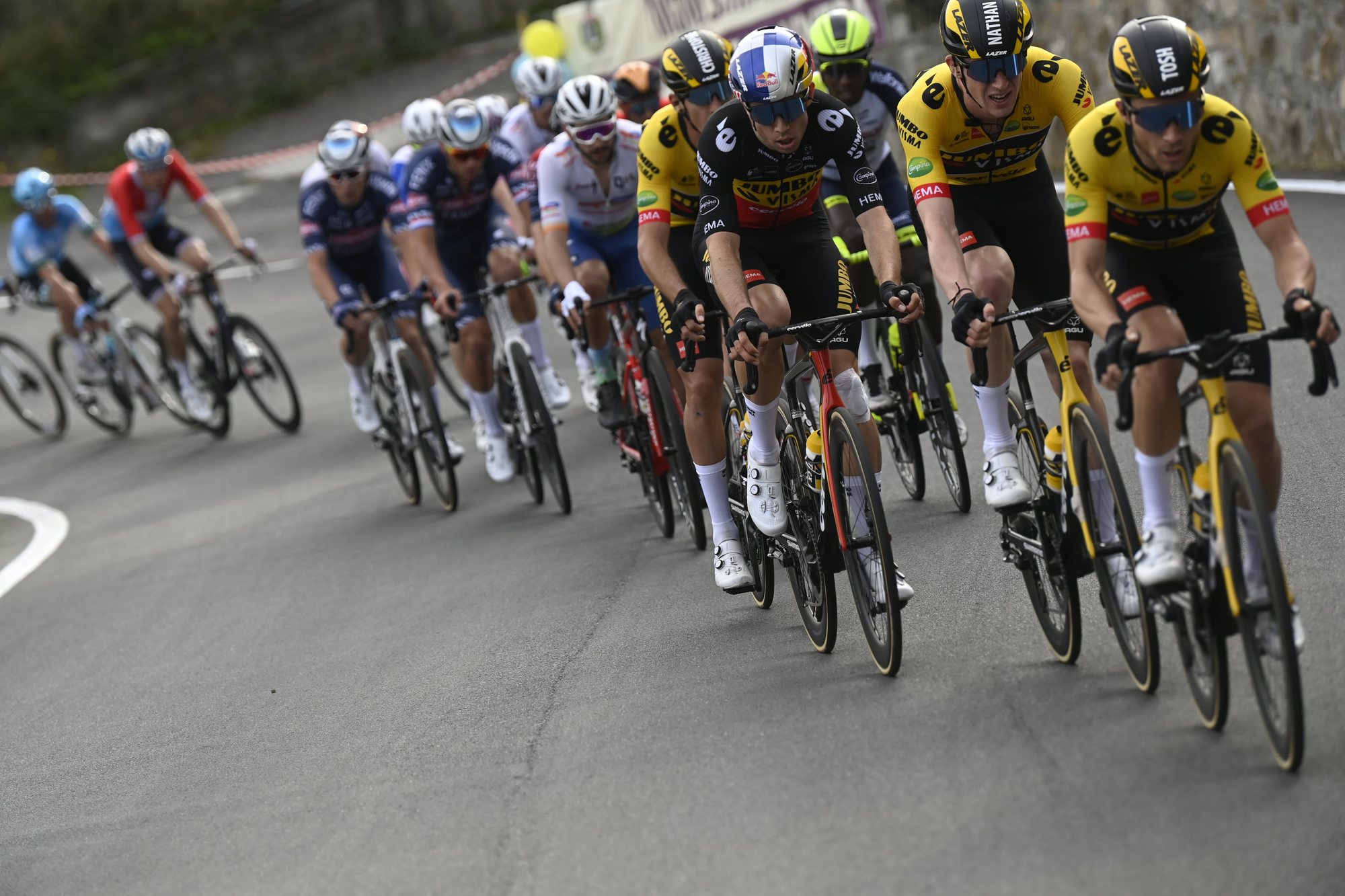
With riders from 14 different teams occupying the top 14 places at Milan-San Remo, it's hardly surprising that there was little cohesion in the chasing group that stalked and so failed to catch Mohorič in the finale.
The help of even a single teammate can make an immense difference amid the tumult of La Classicissima's final two kilometres, with Luca Paolini's turn on behalf of Alexander Kristoff in 2014 a textbook example of the genre.
However in the final reckoning this year, pre-race favourites Van Aert and Pogačar didn't have any companions left to help the chase and Mohorič remained out of reach.
That is not to say, of course, that Van Aert and Pogačar lacked support in this race. Jumbo-Visma and UAE Team Emirates dictated terms on the Cipressa and the run-in to the Poggio, and their forcing left only 26 riders in the front group at the base of the final climb. But neither team managed their resources as smartly as Mohorič's Bahrain Victorious squad.
Mohorič had Damiano Caruso and Jan Tratnik in that front group on the Poggio, but their task was a specific one: to nurse their leader as far up the climb as possible and help him save energy for his daredevil descent.
Mohorič didn't respond to the repeated attacks of Pogačar, preferring to rely on Caruso's pace-setting. Only when the Italian eventually faded in the final kilometre of the climb did Mohorič move up and begin to respond in person.
By contrast, Van Aert had Primož Roglič for company, but the Slovenian's role seemed ill defined. At one point, Roglič even launched an attack of his own, dragging Van der Poel with him, but he paid for that effort and was dropped nearer the summit.
He was perhaps the missing link for Van Aert over the other side. Although, given Roglič's efforts at the GP Denain 48 hours earlier and at Paris-Nice, one wonders should Jumbo-Visma have delegated another rider altogether to be Van Aert's last man here. Was Christophe Laporte perhaps better for that role?
Hindsight is always 20-20 after Milan-San Remo, of course, but the clarity of Bahrain Victorious' vision was notable. In a race that rewards smart thinking and smart tactics as much as strength, they played their hand perfectly. (BR)
Van der Poel back racing in time to shake up the cobbled Classics
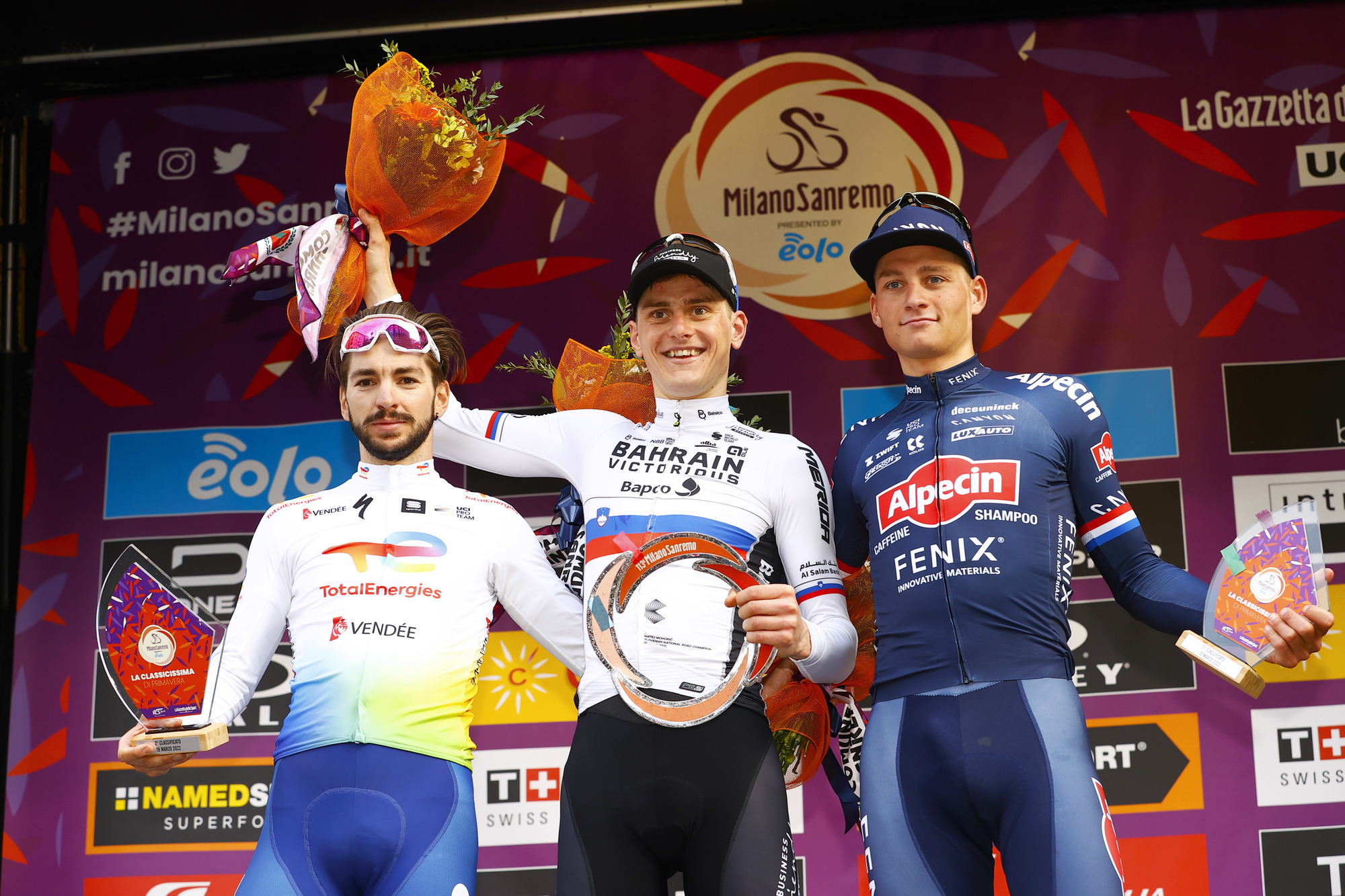
Mathieu van der Poel is back, and the cobbled Classics suddenly appear a lot more interesting.
The Alpecin-Fenix rider opted to ride Milan-San Remo just two days before the race, but his impressive and aggressive riding on the Poggio indicated he is already on good form and so can be a decisive factor in the cobbled Classics in the weeks ahead.
Van der Poel has been out of action since the start of the year in a bid to recover from a long-running back injury that flared up during the summer. The Dutchman has been ramping up his training in recent weeks, claiming he is pain-free and on the road to recovery.
Milan-San Remo was a first test and he will stay in Italy this week, riding the five-day Settimana Coppi e Bartali to put more race days in his legs. He will then return to northern Europe to race Dwars door Vlaanderen, the Tour of Flanders, the Amstel Gold Race and Paris-Roubaix. He may then ride part of the Giro d'Italia to get his season fully back on track for the Tour de France.
The return of Van der Poel is great news for racing fans and for his Alpecin-Fenix team as they chase success and UCI ranking points. However his long-time rival Wout van Aert and the other Classics contenders are perhaps not so happy to see back in the peloton. The Belgian media are already predicting it will now be tougher for Wout van Aert to dominate the cobbled Classics.
For the rest of us it is another reason to prepare the popcorn and get ready to enjoy the Classics season. After Strade Bianche and Milan-San Remo the spring has only just sprung. There is a real sense that the best is yet to come. (SF)
Concern for QuickStep and Ineos
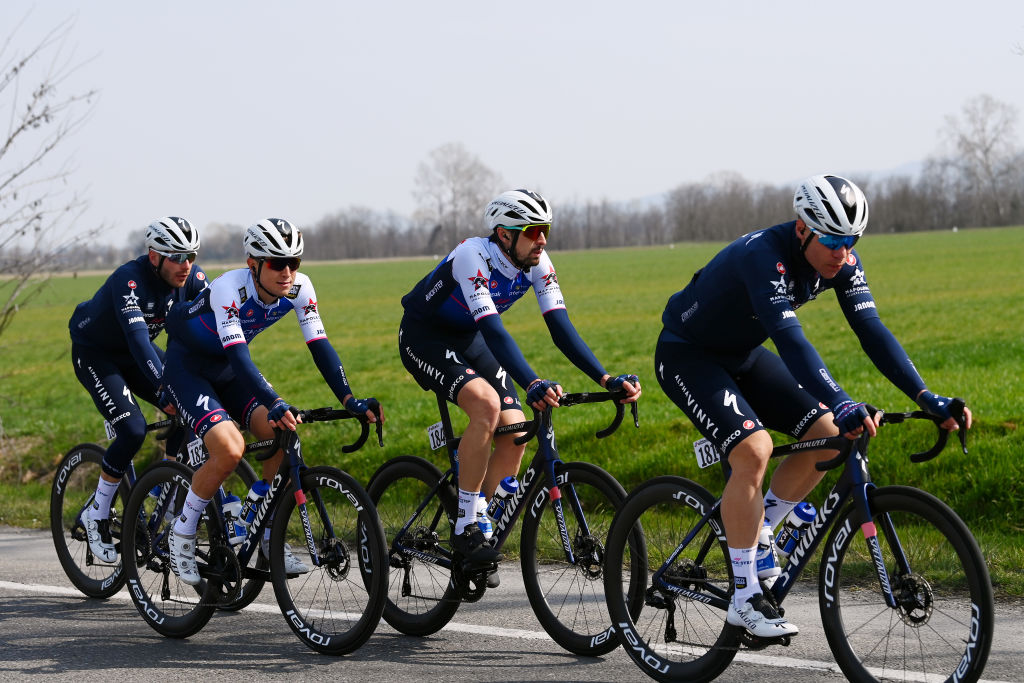
This year's Milan-San Remo was a rare one-day race where QuickStep-AlphaVinyl failed to make an impact. Their sprinter Fabio Jakobsen was distanced on the Cipressa and Florian Sénéchal was the only rider to stay in the same postcode of the leaders on the Poggio. The Frenchman came home in 14th place, but this was, by any metric, a most disappointing outing for his QuickStep team.
Coming on the back of a curiously subdued display at Omloop Het Nieuwsblad, this Italian excursion will be a cause of some concern at the Belgian team, but it is not yet time to panic.
There was certainly mitigation here, given that Julian Alaphilippe, always a redoubtable performer on the Poggio, was absent through illness, while Kasper Asgreen and Yves Lampaert, their two likely leading men on the cobbles, also opted not to make the trip to Italy.
It was a strikingly similar situation for Ineos Grenadiers, who lined up with multiple options at Milan-San Remo but who fell well short of the target.
Tom Pidcock, in his first race back after a bout of illness, was distanced on the Capo Berta, while home hope Filippo Ganna was jettisoned on the Cipressa. Only 2017 winner Michał Kwiatkowski withstood the winnowing process in the finale, coming home in 16th place.
On Saturday's evidence, both teams have significant ground to recoup on rivals such as Van Aert and Van der Poel as the cobbled Classics rear into view, although it's always useful to refrain from snap judgements at this time of year.
Patrick Lefevere always maintains that the balance sheet for the Classics campaign can only be tallied after Liège-Bastogne-Liège. That long view is perhaps all the more pertinent this season, with Paris-Roubaix delayed until April 17. Next week's double-header of E3 Harelbeke and Gent-Wevelgem will reveal more. (BR)

Stephen is one of the most experienced member of the Cyclingnews team, having reported on professional cycling since 1994. He has been Head of News at Cyclingnews since 2022, before which he held the position of European editor since 2012 and previously worked for Reuters, Shift Active Media, and CyclingWeekly, among other publications.